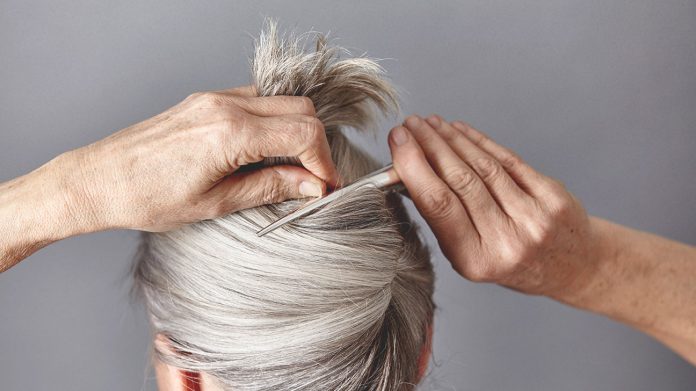Grey hairs are typically a sign of aging, but they’re not timekeepers,they can pop up whenever they feel like it. That being said, it’s common to notice white or gray hairs in your 30s or 40s. In men, greying usually begins at the temples and in the sideburns, which later spreads to the entire scalp, affecting the occiput (back of the head) last. Women usually start greying around the perimeter of the hairline.
Little do we know about the natural pigmenting of the hair and the reason behind greying of hair. Some people also suffer from premature greying of hair which could be an indication of many underlying diseases.
How does hair get its pigmentation?
The human skin contains three pigments in the entire body: haemoglobin, carotenoids and melanin pigments. However, melanins are responsible for the pigmentation (colour) in the skin and the hair.
- Melanin is formed by melanocytes which are specialized pigment cells that place themselves at the openings of the skin’s surface, also known as hair follicles, through which hair grows.
- Hair follicles contain two types of melanin, namely eumelanin and pheomelanin.
- A single hair follicle contains either of the two types of melanin.
- The black-brown pigment called eumelanin gives the black and brown colour to the hair.
- The yellow or red pigment called pheomelanin gives auburn and blonde colour to the hair.
Premature grey hair:
When greying of hair starts before the age of 20 in Caucasians, before 25 in Asians and before 30 in Africans, it is called premature greying of hair or premature canities.
Reasons for premature grey hair:
Though there is no exact cause of premature greying of hair, there are some conditions that could be associated with premature greying of hair:
Genetic factors: Premature greying could be seen in generations.
Hypothyroidism: People with hypothyroidism (decreased levels of thyroid hormone in the body) may suffer from premature greying.
Protein loss: Chronic protein loss due to kwashiorkor, nephrosis, celiac disease, and other malabsorption disorders could lead to premature greying.
Mineral deficiency: Deficiency of iron and copper is associated with premature greying.
Vitamin deficiency: In most cases, premature greying is due to the deficiency of Vitamin B12.
Topically-applied agents: Dithranol, chrysarobin and resorcinol, used to treat conditions like psoriasis may cause premature greying.
Vitiligo: This condition causes melanocytes to loss or destroy because the immune system attacks its own melanocytes.
Von Recklinghausen’s disease (Neurofibromatosis): It is a genetic disease. It involves the growth of tumours along nerves and abnormal development of the bones and skin.
Book’s syndrome: In this syndrome, the skin, sweat glands, hair, nails, teeth and mucous membranes affects simultaneously.
Down syndrome: It is a genetic disorder presenting with a flattened face and nose, short neck, mental disability and greying of hair.
Werner’s syndrome: It is a genetic disease where the affected person may have skin changes, juvenile cataracts (cataract in children), short stature and signs of premature ageing.
Medications: Use of certain medications like mephenesin (a muscle relaxant), chloroquine (used for malaria), triparanol (used to reduce cholesterol), phenylthiourea (used in DNA testing), fluorobutyrophenone and dixyrazine (used to treat various psychiatric disorders) could possibly lead to greying of hair.
Stress: Studies have shown that stress hormones (adrenaline, cortisol) promote the migration of melanocyte cells away from the follicle, leading to premature greying.





























